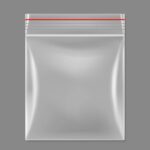
The popular plastic bags commonly referred to as “poly bag” and commonly used as patch handle bags are made from polyethylene.
This comes in very handy as an economic and useful carrier product. The poly bags have been in existence for more than 50 years since its initial development comes in the different type of designs (as in this case patch handle bags) to meet user and customer requirements. This is carried out in four steps namely; material, blending, extruding, printing and finishing.
1. Material Blending
The first step requires mixing polyethylene resin in a blending machine. The polyethylene is mixed with some additives like;
– EPI and D2W (1-2%) to make the plastic bag degradable.
– Anti-static (1%) is also added to prevent the plastic layers from gluing together; this is to aid in opening thin LDPE with relative ease.
– Master-batch (4-7%) is added to make the color film; this can yield a variety of colors like black, white, yellow, red, and blue.
– Ultra-violent inhibitor (UVI) is added to protect the plastic from ultra-violet radiation. This comes in handy when using patch handle bags as agricultural plastic cover.
2. Extruding
Once the mixture is blended, it would be converted into molten form at extremely high temperature. The mixture leaves out in the shape of a bubble which is full of cool air emanating from the air ring. The air stream aids in blowing up and cooling down the plastic. This is a very essential step in the patch handle bag making process because it has an effect on the overall strength of the plastic bag. It also has an effect on its thickness, consistency, and transparency of the film. The next step involves the bubble going through a cooling tower which is about 25 – 35 feet tall. When it gets to the top of the tower, it is then guided so as to be flattened gradually into a flat shape. The flat film then travels over a series of rollers where it is printed, sealed and perforated during the extrusion process.
3. Printing
Patch handle bags can be treated by flexo-printing or gravure printing depending on the type of printing design, the color number is applied on it. For best result, gravure printing comes highly recommended. But if you want to use the patch handle bags for small quantity & food contact bag, then you can go with flexo-printing.
4. Finishing
The final process in making patch handle bags involves three main steps namely; cutting, sealing and folding. Different types of bags require suitable cutting machines. Cutting requires you making a side gusset and a bottom gusset. The heating temperature and the machine sped would also determine the look and strength of the seal. The part cut out from the patch handle bag would be collected and recycled for use as a garbage bag. After cutting the bag is then seals and folding into the desired shape.
The techniques employed to manufacture poly bags differ from bag to bag, but there is a simplified understanding of the bag making process.




 Custom Printed Poly Bags for Trade Shows and Events
Custom Printed Poly Bags for Trade Shows and Events  Benefits of Using Poly Bags for Your Business
Benefits of Using Poly Bags for Your Business  10 Uses for Plastic Bags Around the Home
10 Uses for Plastic Bags Around the Home 
Comments